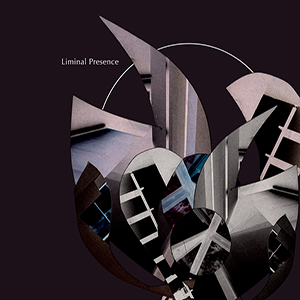 With these two new releases recorded and released in 2019, Stephen Petrus's long running noise/death industrial/ambient/whatever project continues to be productive and constantly evolving, demonstrating his wide array of influences and talents. Here are two distinctly different sounding discs, one a shared release with fellow dark synth fan David Reed (also a member of Nightmares), and the second featuring Murderous Vision in duo configuration with the addition of Jeff Curtis on bass. Each of the discs are remarkable, and exemplify just how much versatility there is in Petrus's work.
With these two new releases recorded and released in 2019, Stephen Petrus's long running noise/death industrial/ambient/whatever project continues to be productive and constantly evolving, demonstrating his wide array of influences and talents. Here are two distinctly different sounding discs, one a shared release with fellow dark synth fan David Reed (also a member of Nightmares), and the second featuring Murderous Vision in duo configuration with the addition of Jeff Curtis on bass. Each of the discs are remarkable, and exemplify just how much versatility there is in Petrus's work.
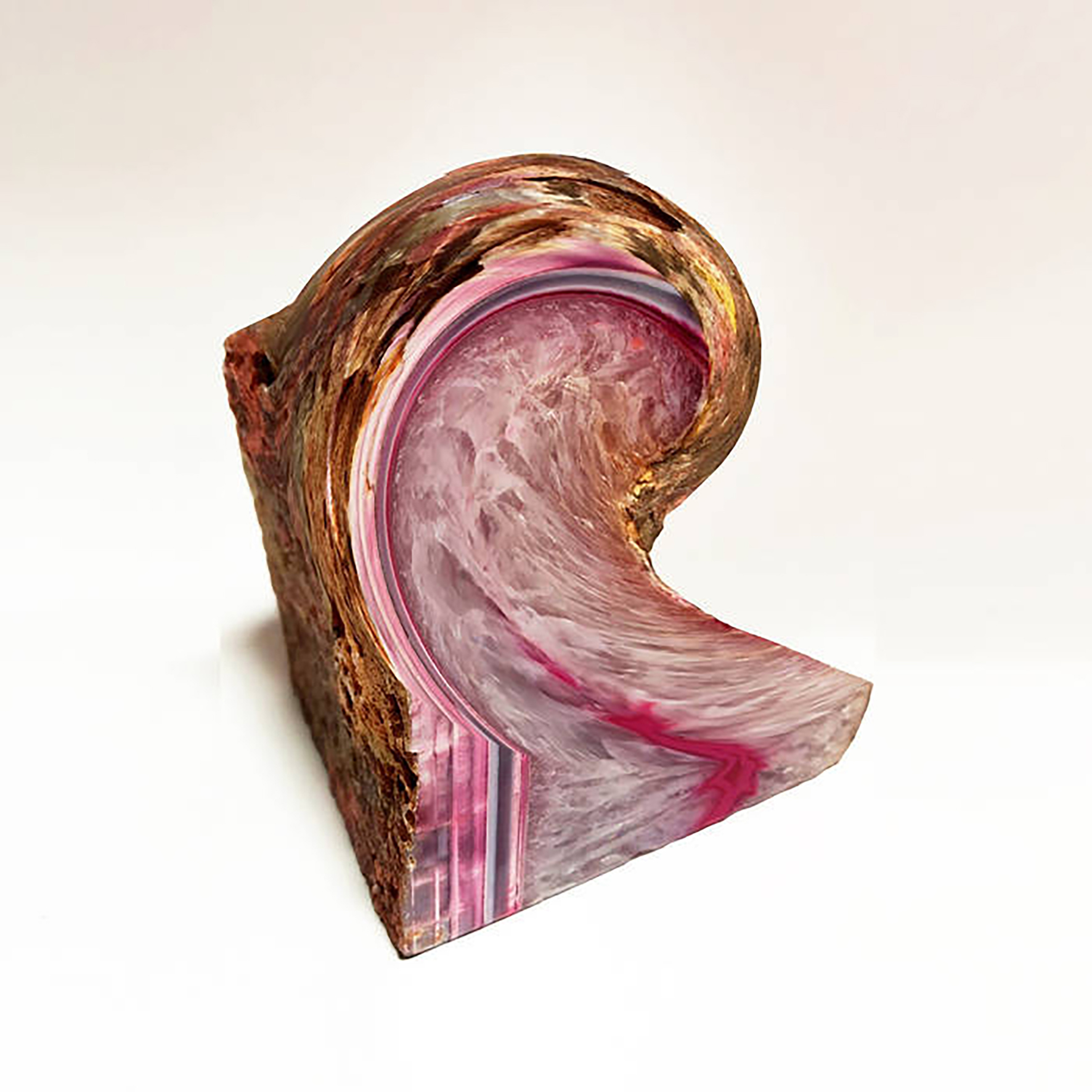
I suppose I have been probably been aware of Rrose since the project first appeared back in 2011, but the electronic music scene is teeming with hot new trends and hip new producers that come and go all the time and I lack the time and will to keep up with them all. If someone is doing something genuinely interesting, I tend to find out about it eventually and I can live with being a little late to the party. That said, there were obviously some signs that Rrose was different right from the start (the mysterious alter ego, the nod to Marcel Duchamp, etc.). It was not until she recorded a James Tenney piece, however, that I realized that this project was something considerably weirder and more ambitious than I would ever have expected. Happily, Rrose's trajectory has only gotten more unpredictable and intriguing since, arguably culminating in a recent collaboration with Charlemagne Palestine. It was her series of collaborations with Lucy (as The Lotus Eaters and otherwise) that ultimately drew me fully into Rrose's fitfully stellar discography though. Much to my delight, this debut solo full-length (after nearly a decade of EPs and collaborations) is roughly in the same vein as those Lucy collaborations, as Rrose continues to perfect her potent mix of deep bass, heavy rhythms, and warped, hallucinatory electronics.

Shasta Cults' Richard Smith has not been releasing albums for very long, but has been an integral and in-demand figure in synthesizer circles for quite a while due to his singular talent for repairing vintage Buchla gear. In fact, this project was originally born from recordings that Smith made to demonstrate the various rare synths that wound up in his workshop. In keeping with that theme, this full-length vinyl debut was composed entirely on the world's sole fully operational Buchla Touché. That certainly makes this a unique and significant release for vintage synth enthusiasts, but it is also a remarkably excellent and well-crafted album that I can enjoy too. Whether or not this is the strongest Shasta Cults release to date is up for debate, however, as competition from 2017’s Arguments for Trivialism and 2019's EP is quite fierce. Each Shasta Cults release has its own distinct character though and the Touché seemed to bring out Smith's warmer, more meditative side, making this release a bit more accessible than the colder, heavier drones of his previous work.
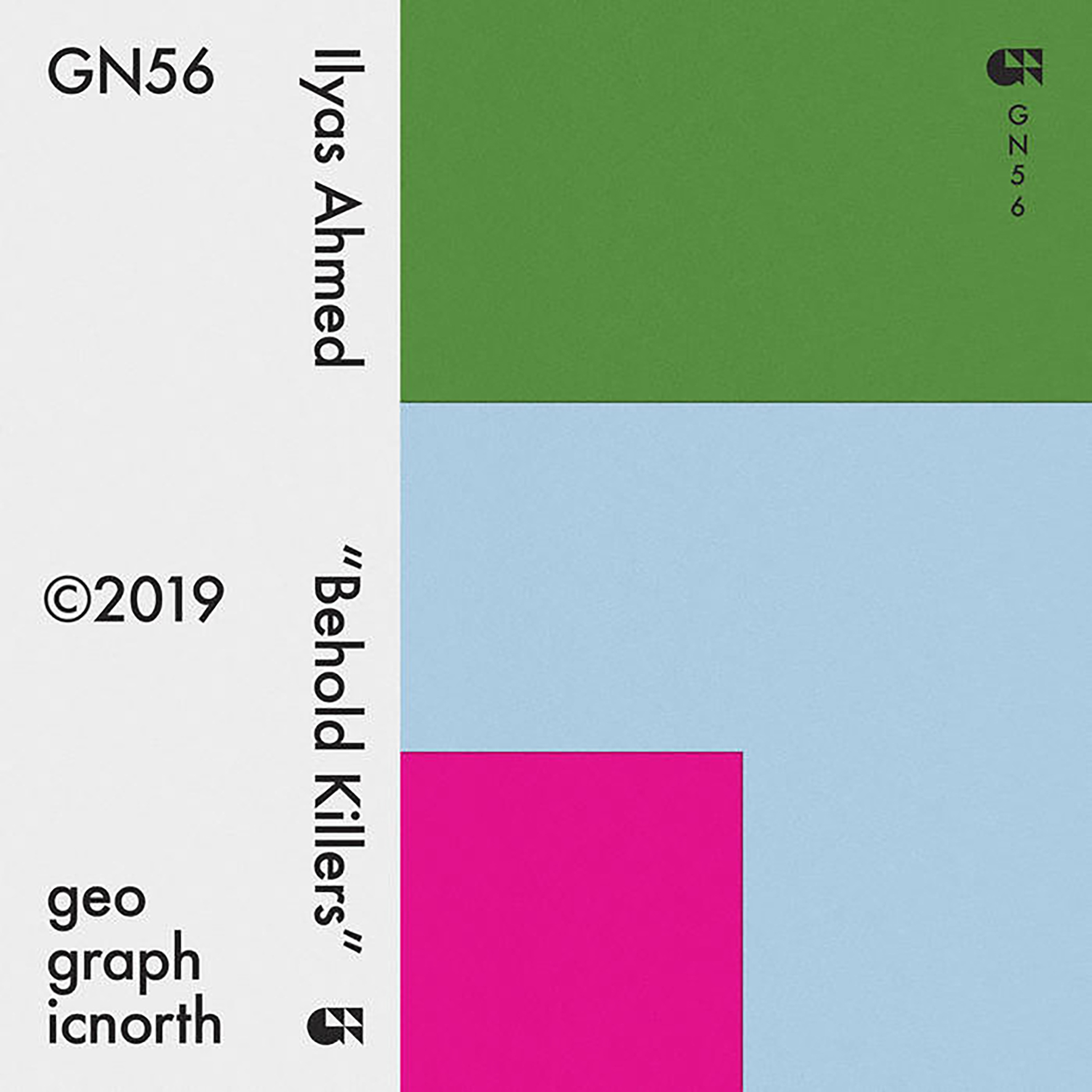 I have always found Portland’s Ilyas Ahmed to be an elusive and enigmatically unusual artist, though I have recently realized that I am basing much of that opinion on his 2005 debut (Between Two Skies). That album remains a cult favorite in some circles, as it exists in murkily melancholy and ghostly shadow realm between free folk and drone. The varied work that Ahmed has released in between that minor classic and this latest cassette has only made it more difficult to pin down his strange and shifting aesthetic, but it also feels as if no time has passed at all: Behold Killers returns once more to the blurry, diffuse gray area where structure, improvisation, drone, and experimentalism precariously coexist and bleed together. However, while the fluid approach to structure on this release is not a far cry from Ahmed's early days, the execution has improved considerably, as Behold Killers explore far warmer and more nuanced emotional territory than much of his previous work. I still find some elements of the album perplexing, of course, but it is anchored by a couple of excellent longform pieces.
I have always found Portland’s Ilyas Ahmed to be an elusive and enigmatically unusual artist, though I have recently realized that I am basing much of that opinion on his 2005 debut (Between Two Skies). That album remains a cult favorite in some circles, as it exists in murkily melancholy and ghostly shadow realm between free folk and drone. The varied work that Ahmed has released in between that minor classic and this latest cassette has only made it more difficult to pin down his strange and shifting aesthetic, but it also feels as if no time has passed at all: Behold Killers returns once more to the blurry, diffuse gray area where structure, improvisation, drone, and experimentalism precariously coexist and bleed together. However, while the fluid approach to structure on this release is not a far cry from Ahmed's early days, the execution has improved considerably, as Behold Killers explore far warmer and more nuanced emotional territory than much of his previous work. I still find some elements of the album perplexing, of course, but it is anchored by a couple of excellent longform pieces.
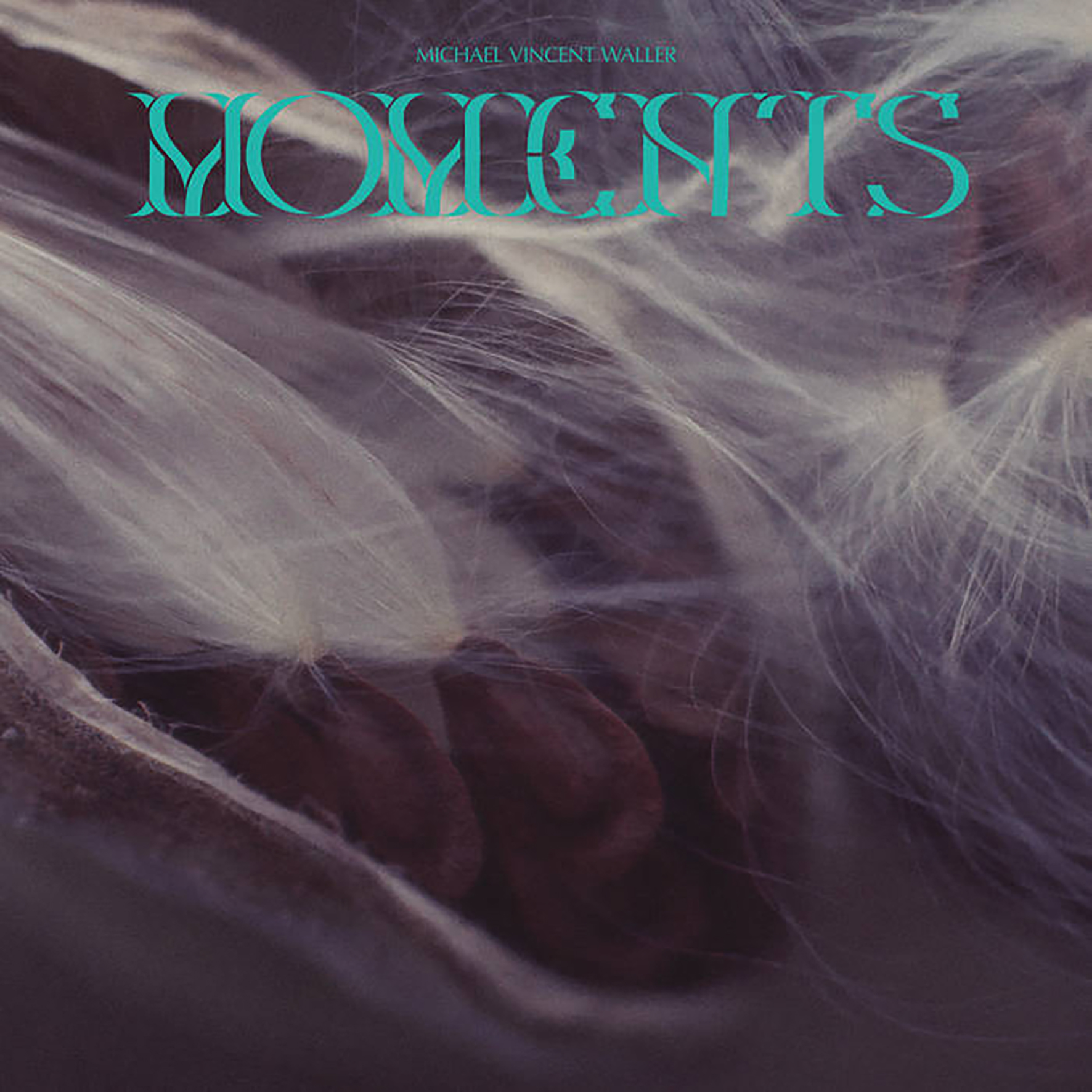 This NYC-based composer has long been a bit of a curious enigma to me, as he seems to travel primarily in experimental music circles, yet seems unwaveringly devoted to making very traditional and melodic classical music. In a quietly subversive way, however, composing simple, elegantly lovely piano pieces in 2019 is a radical act in its own right. That is where Waller (mostly) arrives on Moments, his third album and most minimal, distilled statement to date. That approach suits him well, though I am not necessarily sure he needed go more minimal than he did with 2017’s excellent cello/piano album Trajectories (released on Sean McCann’s always interesting Recital Program imprint). To some degree, Moments feels less like complete statement than its predecessor, resembling instead a kind of expertly curated mixtape of different piano composers unified by a knack for lyrical melodies and a sort of warm, wistful Romanticism. Some are among the most beautiful pieces that Waller has composed to date though, which makes Moments akin to a strong (if improbable) "singles album" of sorts. At times, it also feels like the beginnings of a major creative leap forward.
This NYC-based composer has long been a bit of a curious enigma to me, as he seems to travel primarily in experimental music circles, yet seems unwaveringly devoted to making very traditional and melodic classical music. In a quietly subversive way, however, composing simple, elegantly lovely piano pieces in 2019 is a radical act in its own right. That is where Waller (mostly) arrives on Moments, his third album and most minimal, distilled statement to date. That approach suits him well, though I am not necessarily sure he needed go more minimal than he did with 2017’s excellent cello/piano album Trajectories (released on Sean McCann’s always interesting Recital Program imprint). To some degree, Moments feels less like complete statement than its predecessor, resembling instead a kind of expertly curated mixtape of different piano composers unified by a knack for lyrical melodies and a sort of warm, wistful Romanticism. Some are among the most beautiful pieces that Waller has composed to date though, which makes Moments akin to a strong (if improbable) "singles album" of sorts. At times, it also feels like the beginnings of a major creative leap forward.
 This latest release from Sean McCann picks up right where 2018's excellent Saccharine Scores left off, striking a lovely balance between stretched, blurred, and fragmented orchestral music and distracted, surreal snatches of spoken word. In the best way, McCann's recent work feels like eavesdropping on his subconconcious mind (though it is thankfully a subconscious mind with all of the boring bits edited out). Much like its predecessor, Puck is a series of warmly beautiful reveries swirling with mental detritus that feels meaningful, yet those impressions elude any connections or context that might illuminate what that meaning possibly could be. As a result, Puck is frequently quite moving in a profoundly ineffable way. McCann proves himself to be remarkably adept at mimicking how memory works, as we do not get to choose what lingers and what disappears: mundane scenes, fleeting impressions, and legitimately important moments all jumble together in a weird stew and there is no predicting what will bubble up to the surface next (or why). In lesser hands, an album in this vein would probably feel like a self-conscious attempt to blow my mind with wild surrealist juxtapositions, but McCann largely gets the tone and the execution exactly right: Puck is a beautifully casual, organic, fragile, and intimate album. It is quite possibly McCann's best as well.
This latest release from Sean McCann picks up right where 2018's excellent Saccharine Scores left off, striking a lovely balance between stretched, blurred, and fragmented orchestral music and distracted, surreal snatches of spoken word. In the best way, McCann's recent work feels like eavesdropping on his subconconcious mind (though it is thankfully a subconscious mind with all of the boring bits edited out). Much like its predecessor, Puck is a series of warmly beautiful reveries swirling with mental detritus that feels meaningful, yet those impressions elude any connections or context that might illuminate what that meaning possibly could be. As a result, Puck is frequently quite moving in a profoundly ineffable way. McCann proves himself to be remarkably adept at mimicking how memory works, as we do not get to choose what lingers and what disappears: mundane scenes, fleeting impressions, and legitimately important moments all jumble together in a weird stew and there is no predicting what will bubble up to the surface next (or why). In lesser hands, an album in this vein would probably feel like a self-conscious attempt to blow my mind with wild surrealist juxtapositions, but McCann largely gets the tone and the execution exactly right: Puck is a beautifully casual, organic, fragile, and intimate album. It is quite possibly McCann's best as well.
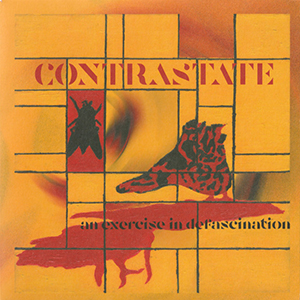 Functioning as a preview for a work-in-progress record, the two songs that make up An Exercise in Defascination (which will appear as different mixes on the album proper upon its completion) herald the theme of deconstructing giallo films that will appear there. Drawing from film soundtracks, as well as the overall themes of that specific style of horror film, Contrastate distill those very essences into a brief teaser of terror and surrealism perfectly.
Functioning as a preview for a work-in-progress record, the two songs that make up An Exercise in Defascination (which will appear as different mixes on the album proper upon its completion) herald the theme of deconstructing giallo films that will appear there. Drawing from film soundtracks, as well as the overall themes of that specific style of horror film, Contrastate distill those very essences into a brief teaser of terror and surrealism perfectly.
 As Gog, Michael Bjella has developed a rather expansive catalog of bleak, heavy music, largely centered around guitar, noise, and extremely dark moods. On 2015’s collaborative record with Robert Skrzyński, Black Box Recordings, he shifted his focus to more abstract, noisier fronts. For his debut release as Distance Machine, he has mixed up the plans a bit more. Things are still oppressively dark for the most part but in a subtler, ambient context that reference classic works of the style while still showing Bjella’s own spin on it.
As Gog, Michael Bjella has developed a rather expansive catalog of bleak, heavy music, largely centered around guitar, noise, and extremely dark moods. On 2015’s collaborative record with Robert Skrzyński, Black Box Recordings, he shifted his focus to more abstract, noisier fronts. For his debut release as Distance Machine, he has mixed up the plans a bit more. Things are still oppressively dark for the most part but in a subtler, ambient context that reference classic works of the style while still showing Bjella’s own spin on it.
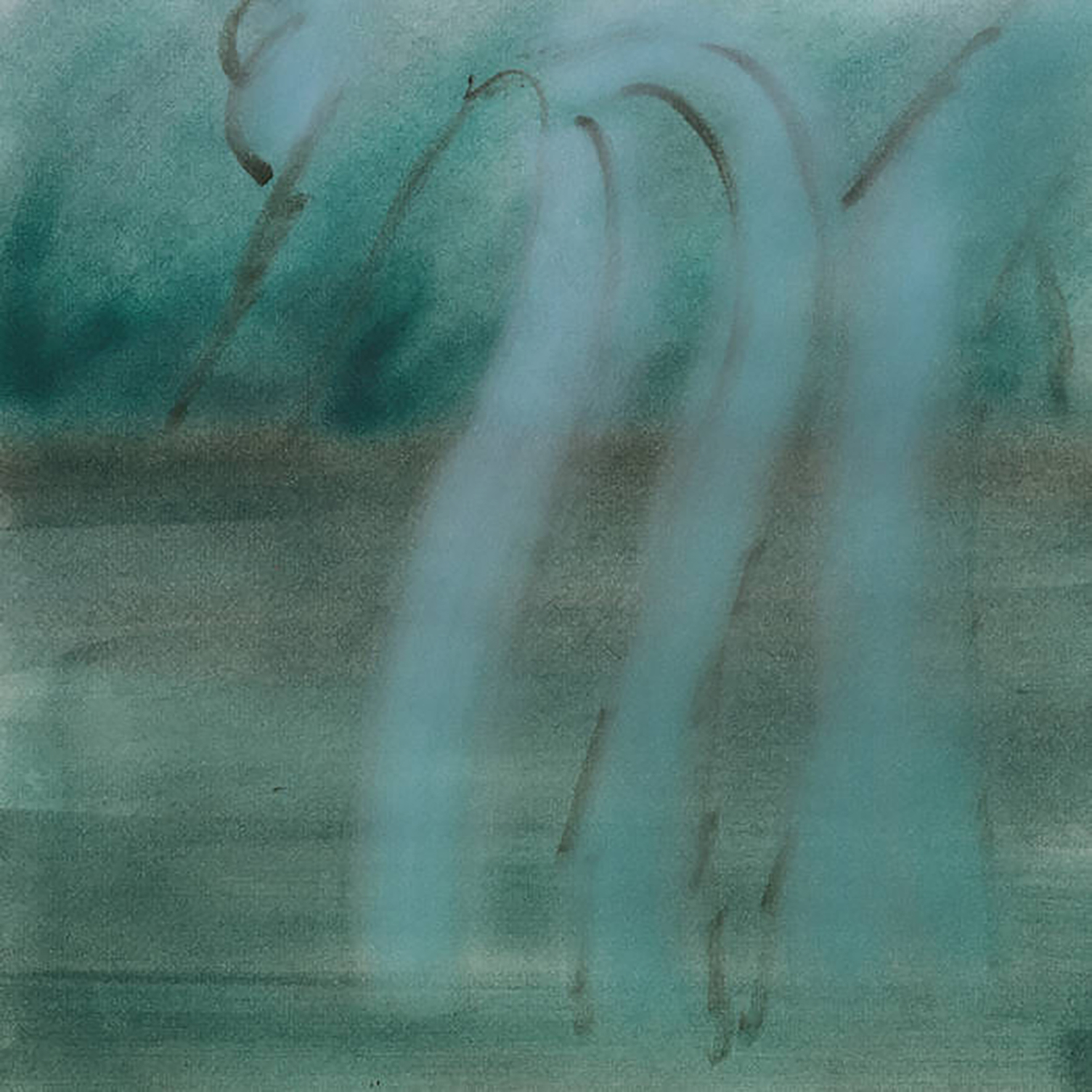 The Students of Decay label has had an impressive run of being way ahead of the curve over the years, as Alex Cobb’s imprint was responsible for the first major US releases from artists like Sarah Davachi and Natural Snow Buildings. The latest artist to be welcomed into that pantheon is Sante Fe-based composer Theodore Cale Schafer, making his vinyl debut after a handful of cassette releases and a very bizarre spoken word/conceptual album on Spain's Angoisse label. Cobb describes the album as "diaristic" and prioritizing "spontaneity and ephemerality," which seems as apt a description of Schafer's fragile, hiss-soaked vignettes as any, as the aesthetic of Patience is definitely an elusive and impressionistic one. When Schafer hits the mark just right, however, the results are strikingly beautiful, achieving a rare balance of simplicity, intimacy, and soft-focus unreality.
The Students of Decay label has had an impressive run of being way ahead of the curve over the years, as Alex Cobb’s imprint was responsible for the first major US releases from artists like Sarah Davachi and Natural Snow Buildings. The latest artist to be welcomed into that pantheon is Sante Fe-based composer Theodore Cale Schafer, making his vinyl debut after a handful of cassette releases and a very bizarre spoken word/conceptual album on Spain's Angoisse label. Cobb describes the album as "diaristic" and prioritizing "spontaneity and ephemerality," which seems as apt a description of Schafer's fragile, hiss-soaked vignettes as any, as the aesthetic of Patience is definitely an elusive and impressionistic one. When Schafer hits the mark just right, however, the results are strikingly beautiful, achieving a rare balance of simplicity, intimacy, and soft-focus unreality.
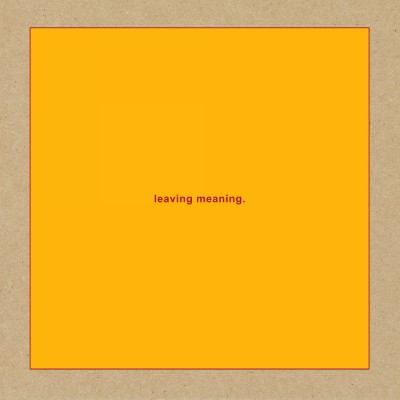 Michael Gira may have announced that Leaving Meaning would feature Swans continuing in a different form after closing the book on The Glowing Man in 2016. The change has been comparably more subtle than the stylistic shifts of the band throughout their nearly 40 year career, but the progress is distinct. This record draws not only from the recent albums, but also Gira's work with the interim Angels of Light project as well. The album is the perfect blend of the past and the recent, but looks direction to the future as well.
Michael Gira may have announced that Leaving Meaning would feature Swans continuing in a different form after closing the book on The Glowing Man in 2016. The change has been comparably more subtle than the stylistic shifts of the band throughout their nearly 40 year career, but the progress is distinct. This record draws not only from the recent albums, but also Gira's work with the interim Angels of Light project as well. The album is the perfect blend of the past and the recent, but looks direction to the future as well.
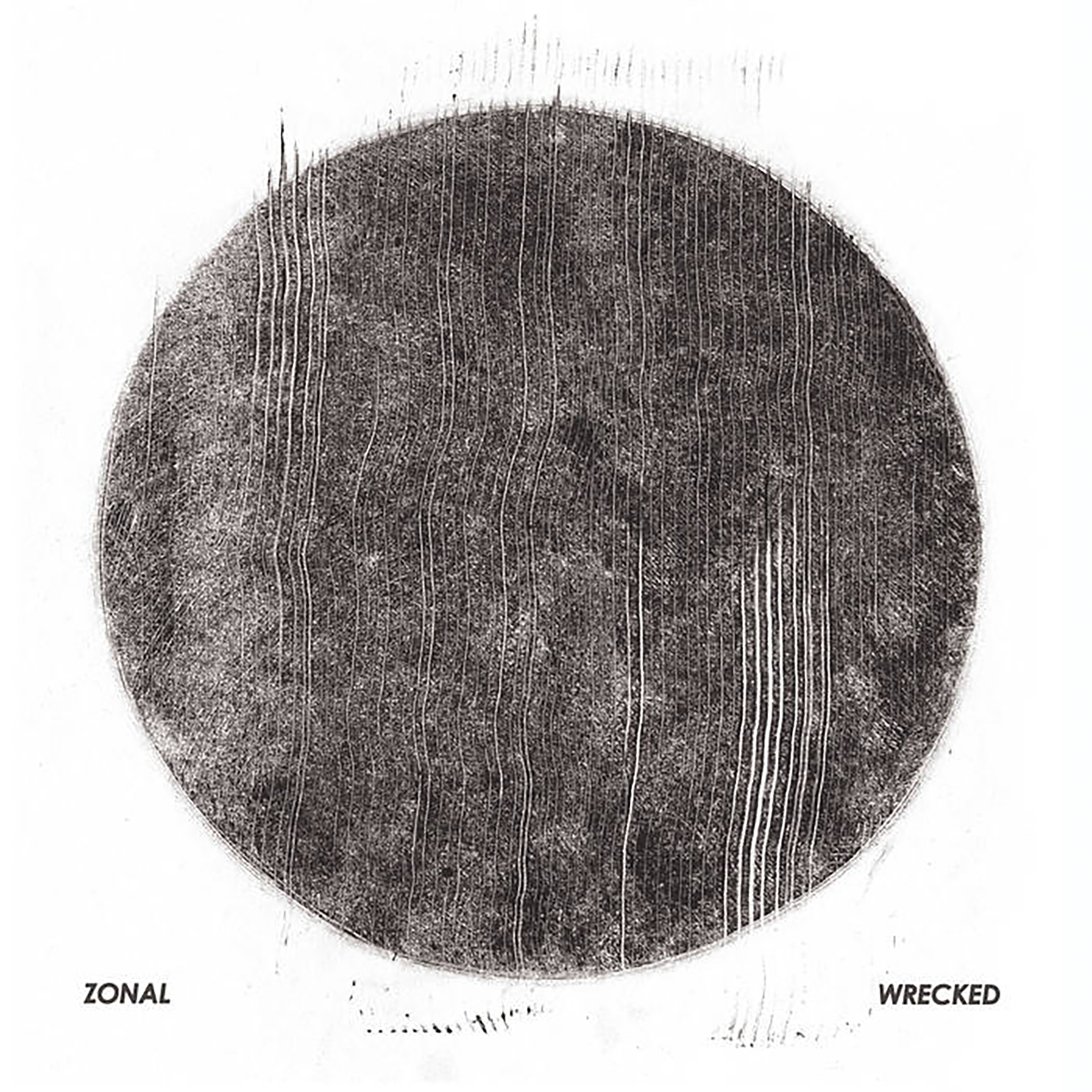 Justin Broadrick and Kevin Martin founded Zonal in 2000 and, other than a very limited CDR release, saw the project falling by the wayside, surely impacted by the collapse of Broadrick’s Godflesh a few years later. During this time Martin reconfigured his solo project The Bug into a blown out dancehall/dub/grime project, collaborating with a multitude of different MCs and vocalists. However, the two decided to reactivate Zonal to specifically pick up where Techno Animal left off with 2001’s The Brotherhood of the Bomb. That lineage is clearly heard via the distorted beats and processed synths, and with vocalist Moor Mother joining them for the first half, it culminates into a brilliant and fresh, yet familiar sound that stands strong with any of the duo’s previous collaborations.
Justin Broadrick and Kevin Martin founded Zonal in 2000 and, other than a very limited CDR release, saw the project falling by the wayside, surely impacted by the collapse of Broadrick’s Godflesh a few years later. During this time Martin reconfigured his solo project The Bug into a blown out dancehall/dub/grime project, collaborating with a multitude of different MCs and vocalists. However, the two decided to reactivate Zonal to specifically pick up where Techno Animal left off with 2001’s The Brotherhood of the Bomb. That lineage is clearly heard via the distorted beats and processed synths, and with vocalist Moor Mother joining them for the first half, it culminates into a brilliant and fresh, yet familiar sound that stands strong with any of the duo’s previous collaborations.
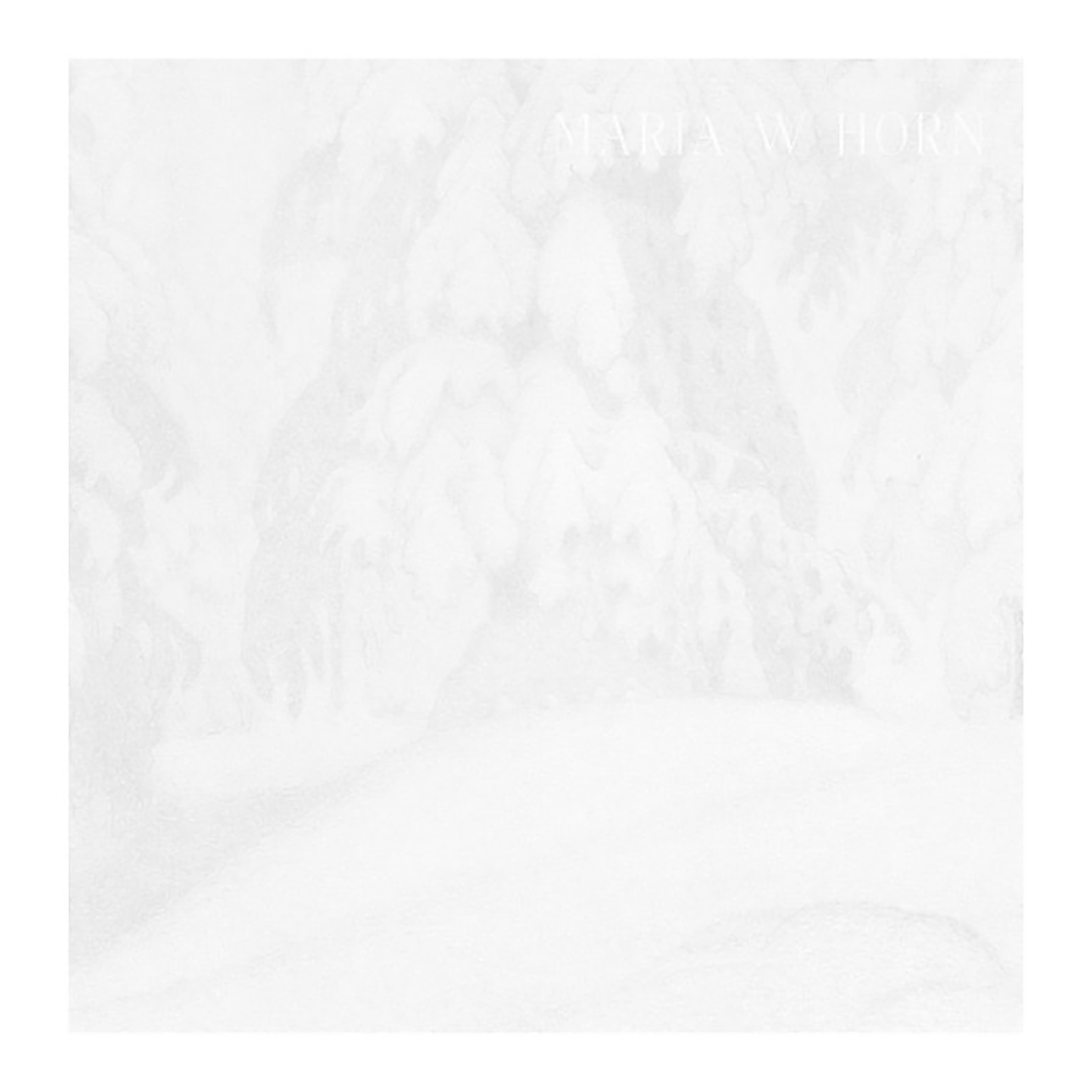
This Swedish composer earned a lot of attention with last year's blackened drone opus Kontrapoetik, but Horn has been a significant figure in European underground music circles for quite a while (she co-runs the XKatedral label with Kali Malone, for example). On her latest album, however, she seamlessly slips into somewhat different stylistic territory than I expected, as Epistasis is shaped by some very intriguing and inventive compositional techniques (one of which draws its inspiration from Arvo Pärt). And much like Pärt (and Malone), Horn has found a unique way to use traditional classical instrumentation that does not bear much resemblance to the current classical/neo-classical milieu at all. There are still some lingering shades of Horn's darker, heavy influences to be found as well, but the most striking creative breakthrough on the album comes in the form of the tender, twinkling, and intricately arranged two-part piano suite "Interlocked Cycles."
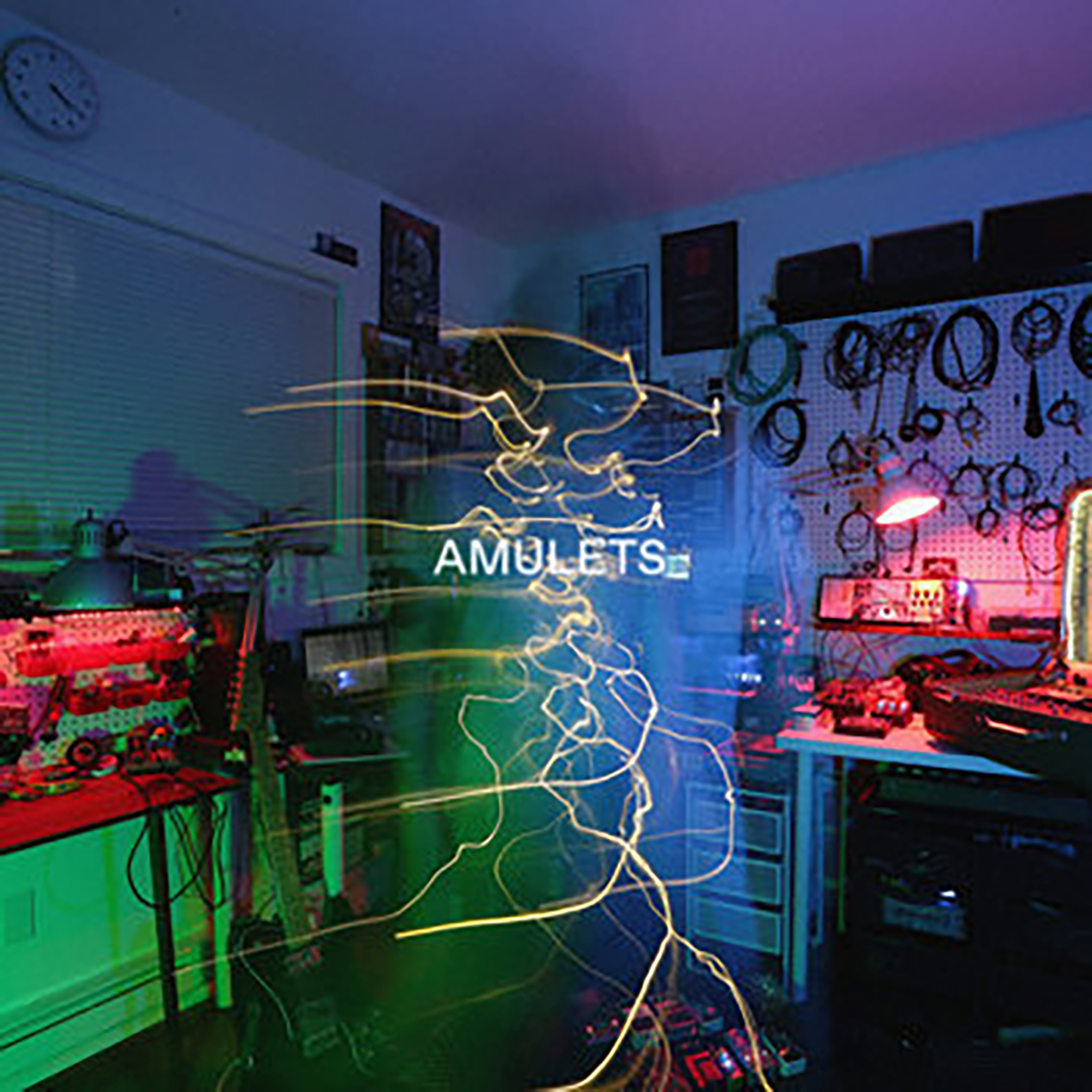 Randall Taylor has quietly emerged as one of the most talented and distinctive tape loop artists in the world over the last few years, steadily releasing a prolific flow of cassettes on a variety of labels. Remarkably, however, Between Distant and Remote is his first vinyl release, which I suppose makes this an auspicious occasion career-wise. It is also the first time I have personally delved seriously into his oeuvre despite my general predisposition towards warbly loops and obsessive repetition. I suspect the reason Amulets has eluded me until now is that Taylor uses tapes as a compositional tool to craft warm, dreamlike reveries of processed guitar ambiance rather than making the tapes the focus. Of course, the tapes very clearly are the focus in Taylor's process, but the finished compositions that ultimately emerge could easily be mistaken for the work of an ambient-minded guitarist with a passion for lush layering. If Taylor were a lesser artist, that approach would disappoint me, but Between Distant and Remote scratches a similar itch to classic shoegaze-damaged drone artists like Belong (and it gets there in an impressively inventive way).
Randall Taylor has quietly emerged as one of the most talented and distinctive tape loop artists in the world over the last few years, steadily releasing a prolific flow of cassettes on a variety of labels. Remarkably, however, Between Distant and Remote is his first vinyl release, which I suppose makes this an auspicious occasion career-wise. It is also the first time I have personally delved seriously into his oeuvre despite my general predisposition towards warbly loops and obsessive repetition. I suspect the reason Amulets has eluded me until now is that Taylor uses tapes as a compositional tool to craft warm, dreamlike reveries of processed guitar ambiance rather than making the tapes the focus. Of course, the tapes very clearly are the focus in Taylor's process, but the finished compositions that ultimately emerge could easily be mistaken for the work of an ambient-minded guitarist with a passion for lush layering. If Taylor were a lesser artist, that approach would disappoint me, but Between Distant and Remote scratches a similar itch to classic shoegaze-damaged drone artists like Belong (and it gets there in an impressively inventive way).
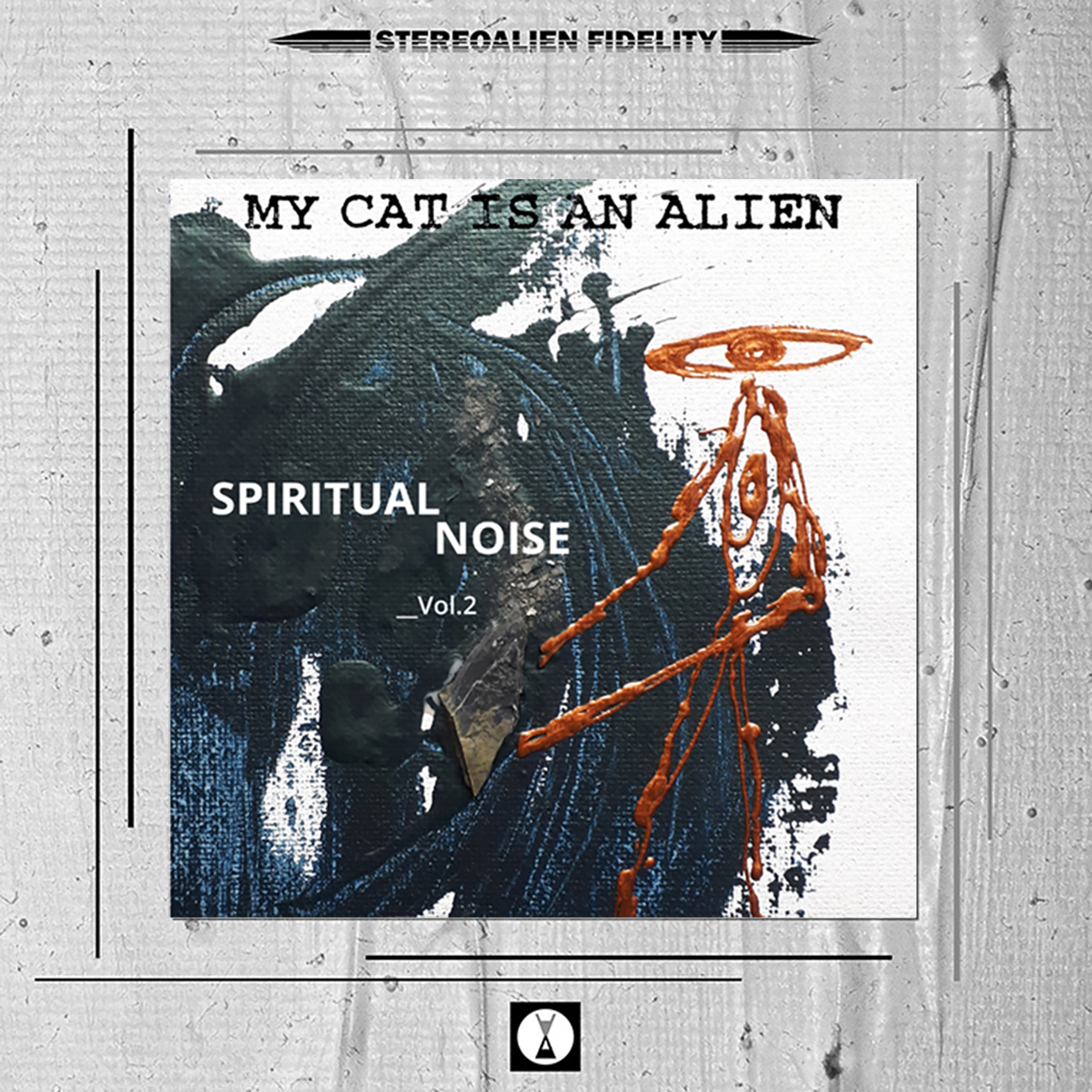 Earlier this year, Maurizio and Roberto Opalio debuted an ambitious new phase of their long-running My Cat is an Alien project with Spiritual Noise. Vol. I. Appropriately, this sequel is a continuation of that vein, but there is no such thing as a predictable linear progression in the Opalios' universe: each fresh album is like a veil being pulled back to reveal an otherworldly and deeply hallucinatory vista quite unlike anything anyone else has ever recorded. In fact, this project calls to mind a lonely satellite that just keeps drifting deeper and deeper beyond our solar system, sporadically sending back increasingly haunted and alien images that have no earthly analog. Naturally, music this unapologetically outré is an acquired taste that can challenge even the most adventurous ears, as there are no recognizable reference points or even nods to Earth-bound modality, but the closing "Silver Glimpses of Infinity" is the closest that the duo have come to comparative accessibility in years…probably. It is equally likely that listening to so many MCIAA albums has irrevocably rewired my brain at this point and I am now fully desensitized to the more queasy and reality-dissolving elements of their aesthetic. Either way, it is still quite an amazing piece.
Earlier this year, Maurizio and Roberto Opalio debuted an ambitious new phase of their long-running My Cat is an Alien project with Spiritual Noise. Vol. I. Appropriately, this sequel is a continuation of that vein, but there is no such thing as a predictable linear progression in the Opalios' universe: each fresh album is like a veil being pulled back to reveal an otherworldly and deeply hallucinatory vista quite unlike anything anyone else has ever recorded. In fact, this project calls to mind a lonely satellite that just keeps drifting deeper and deeper beyond our solar system, sporadically sending back increasingly haunted and alien images that have no earthly analog. Naturally, music this unapologetically outré is an acquired taste that can challenge even the most adventurous ears, as there are no recognizable reference points or even nods to Earth-bound modality, but the closing "Silver Glimpses of Infinity" is the closest that the duo have come to comparative accessibility in years…probably. It is equally likely that listening to so many MCIAA albums has irrevocably rewired my brain at this point and I am now fully desensitized to the more queasy and reality-dissolving elements of their aesthetic. Either way, it is still quite an amazing piece.
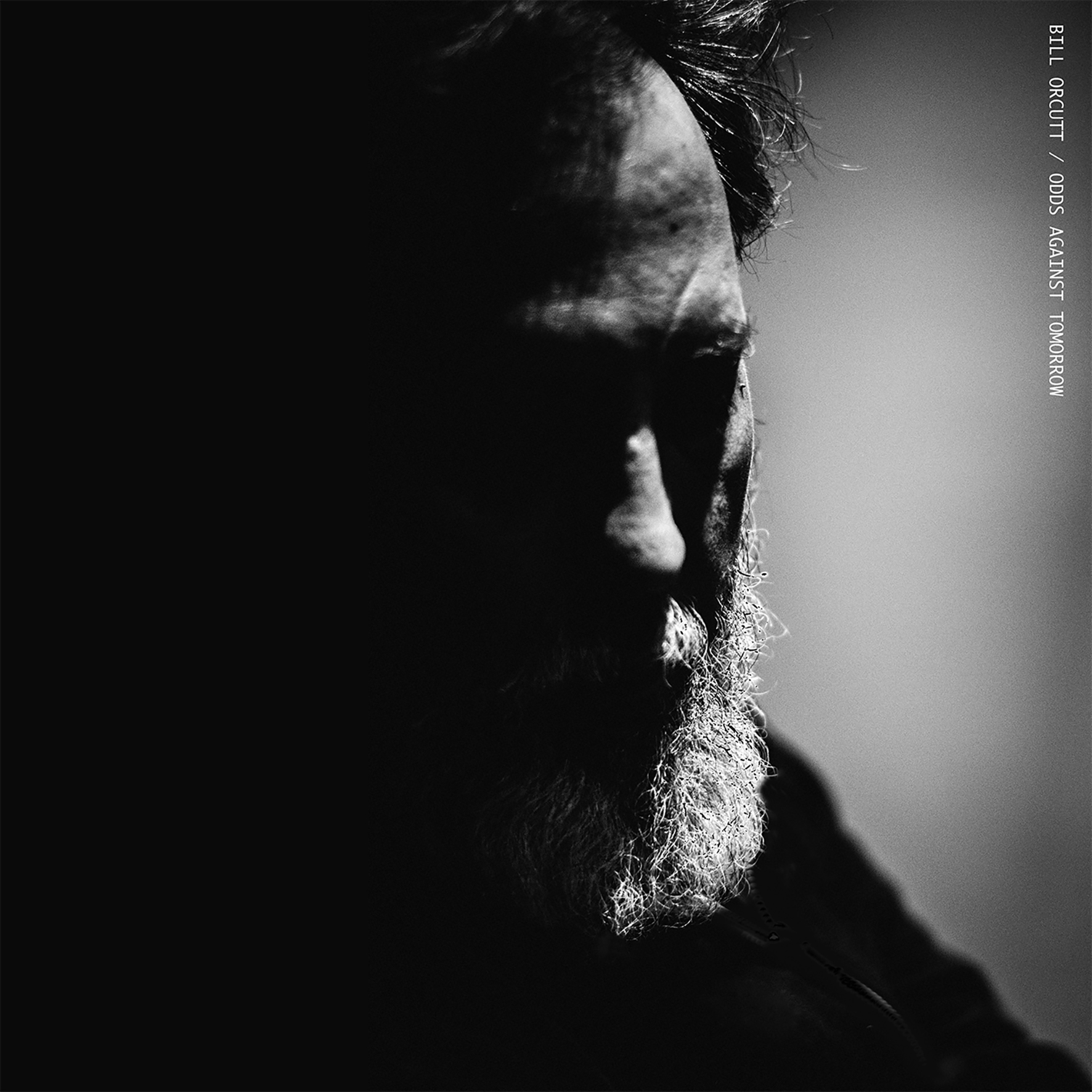 Bill Orcutt's career admittedly had quite an abrasive and chaotic start with Harry Pussy, but it has always been abundantly clear that he is one of the more idiosyncratic and explosive guitar stylists on the planet. It was not until he started releasing solo albums, however, that I began to feel like he was some kind of outsider genius rather than a room-clearing noise maniac (though I imagine it was impossible to convey any emotion more subtle than "baseball bat to the face" with a human volcano like Adris Hoyos behind the drum kit). In any case, Orcutt's late-career shift to more intimate, melodic material has been nothing short of a revelation and 2017's self-titled studio album was the brilliant culmination of that evolution. With this follow-up, Orcutt occasionally hits some similar highs, but Odds Against Tomorrow is more of an intriguing transitional album or lateral move than another instant classic, as he mostly dispenses with playing standards to focus on his own compositions and some very promising experiments with multi-tracking.
Bill Orcutt's career admittedly had quite an abrasive and chaotic start with Harry Pussy, but it has always been abundantly clear that he is one of the more idiosyncratic and explosive guitar stylists on the planet. It was not until he started releasing solo albums, however, that I began to feel like he was some kind of outsider genius rather than a room-clearing noise maniac (though I imagine it was impossible to convey any emotion more subtle than "baseball bat to the face" with a human volcano like Adris Hoyos behind the drum kit). In any case, Orcutt's late-career shift to more intimate, melodic material has been nothing short of a revelation and 2017's self-titled studio album was the brilliant culmination of that evolution. With this follow-up, Orcutt occasionally hits some similar highs, but Odds Against Tomorrow is more of an intriguing transitional album or lateral move than another instant classic, as he mostly dispenses with playing standards to focus on his own compositions and some very promising experiments with multi-tracking.
 Compared to the first release I heard from Australian composer Todd Anderson-Kunert, Conjectures is a significantly different piece of work. A Good Time to Go, from 2018, was an excellent tape of that drew from all different forms of abstract electronic sound art, from elements of rhythm and heavily processed sounds to more conventional synthesizer expanses. For Conjectures, he takes a more reductive approach. Using only the massive Moog System 55 modular synthesizer, the result is a very focused, yet dynamic work that showcases both the instrument and the artist.
Compared to the first release I heard from Australian composer Todd Anderson-Kunert, Conjectures is a significantly different piece of work. A Good Time to Go, from 2018, was an excellent tape of that drew from all different forms of abstract electronic sound art, from elements of rhythm and heavily processed sounds to more conventional synthesizer expanses. For Conjectures, he takes a more reductive approach. Using only the massive Moog System 55 modular synthesizer, the result is a very focused, yet dynamic work that showcases both the instrument and the artist.
 Following up the limited 2015 release of her solo debut Surfacing, Faith Coloccia’s (also of Mamiffer) latest work is in some ways a continuation of that, but also something new entirely. With recordings dating back to 2015, Here Behold Your Own captures not only an artist, but a person in transition: the material was recorded before and mixed after Coloccia gave birth to a son with her Mamiffer/SIGE partner Aaron Turner. Like revisiting a photo album from many years past, she creates a perfectly somber, yet pleasurably nostalgic mood.
Following up the limited 2015 release of her solo debut Surfacing, Faith Coloccia’s (also of Mamiffer) latest work is in some ways a continuation of that, but also something new entirely. With recordings dating back to 2015, Here Behold Your Own captures not only an artist, but a person in transition: the material was recorded before and mixed after Coloccia gave birth to a son with her Mamiffer/SIGE partner Aaron Turner. Like revisiting a photo album from many years past, she creates a perfectly somber, yet pleasurably nostalgic mood.
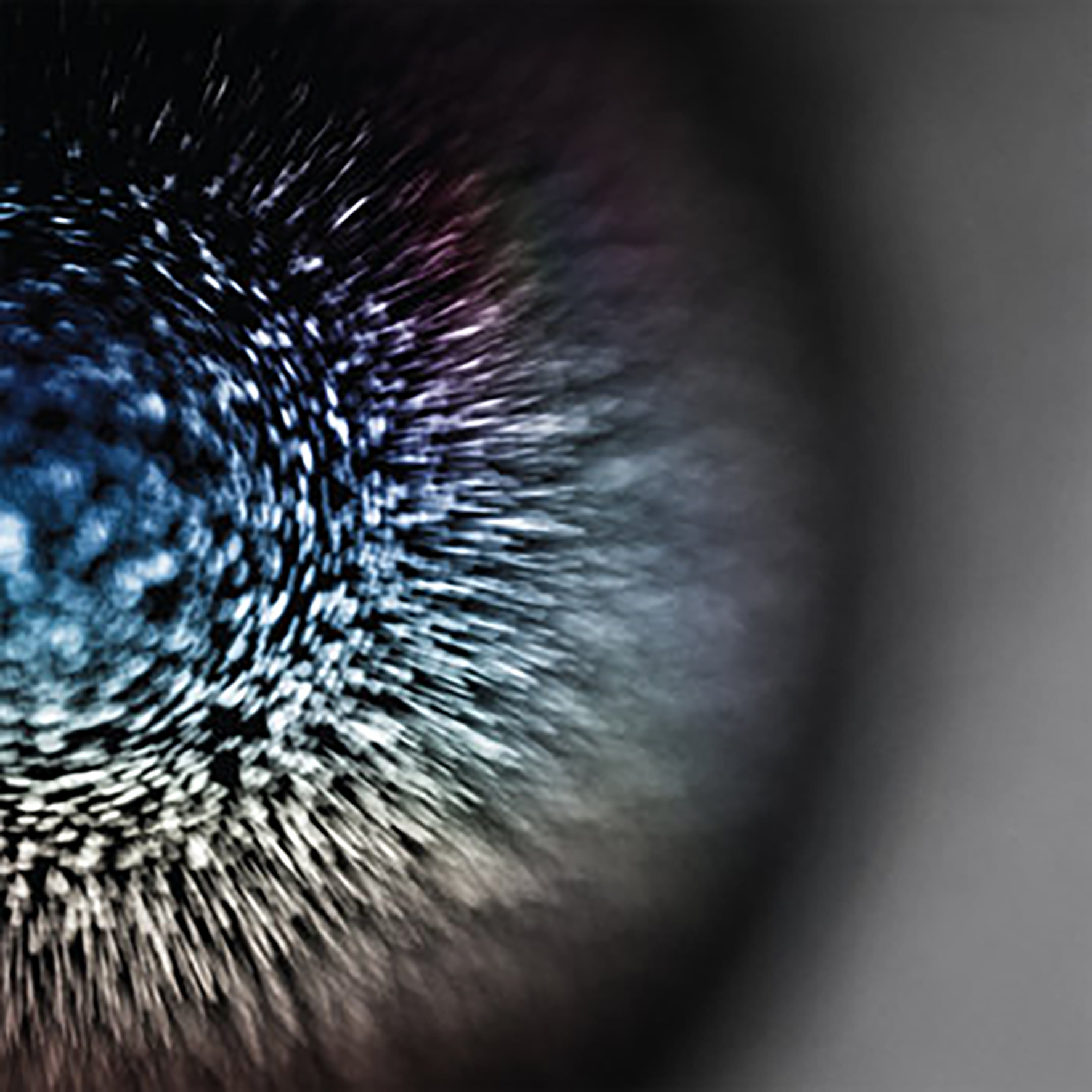 No one can predict which trends or innovations will shape or define the experimental music of the future, but Emptyset's latest bombshell certainly feels like a gloriously bracing vision of one possible path: Blossoms is an album "generated entirely from the output of a neural network-based artificial intelligence system." While the duo of James Ginzburg and Paul Purgas has always been extremely forward-thinking and experimentally minded, this is the first Emptyset album where it seems like the pair has actually leapt several years ahead of everyone else rather than merely taking existing ideas to unexpected (and sometimes fascinating) extremes. That said, Blossoms is also a culmination of the same themes that have obsessed Emptyset for years, as the source material comes from recent acoustic improvisations with materials like wood and metal as well as their backlog of more architecturally inspired recordings (though it all ultimately emerges in radically unrecognizable form). At its best, Blossoms sounds like little else that I have ever heard, evoking a kind of visceral, shape-shifting sci-fi nightmare.
No one can predict which trends or innovations will shape or define the experimental music of the future, but Emptyset's latest bombshell certainly feels like a gloriously bracing vision of one possible path: Blossoms is an album "generated entirely from the output of a neural network-based artificial intelligence system." While the duo of James Ginzburg and Paul Purgas has always been extremely forward-thinking and experimentally minded, this is the first Emptyset album where it seems like the pair has actually leapt several years ahead of everyone else rather than merely taking existing ideas to unexpected (and sometimes fascinating) extremes. That said, Blossoms is also a culmination of the same themes that have obsessed Emptyset for years, as the source material comes from recent acoustic improvisations with materials like wood and metal as well as their backlog of more architecturally inspired recordings (though it all ultimately emerges in radically unrecognizable form). At its best, Blossoms sounds like little else that I have ever heard, evoking a kind of visceral, shape-shifting sci-fi nightmare.
 The downside to releasing a beloved and perfectly distilled EP like The Garden is that there will eventually have to be a follow-up to it and people will expect it to be every bit as good (if not better) than its predecessor. That is an unenviable level of creative pressure to be confronted with, but Carla dal Forno seems to have passed through it with grace and aplomb (and even managed to start her own record label along the way). To her credit, dal Forno was not at all interested in making The Garden II, though her subsequent cover album (Top of the Pops) seems to have provided a rough template, as she has clearly been thinking a lot about what goes into constructing a good and memorable pop song. Having internalized that, she then wrote a bunch of her own. In a broad sense, it is very apparent that dal Forno is heavily influenced by the classic minimalist post-punk/indie pop of Young Marble Giants and AC Marias, but the best songs on Look Up Sharp feel like an inspired update rather than a loving homage, as she strikes a truly elegant balance of pared-to-the-bone starkness, muscular bass riffs, casual sensuousness, and understated experimentation.
The downside to releasing a beloved and perfectly distilled EP like The Garden is that there will eventually have to be a follow-up to it and people will expect it to be every bit as good (if not better) than its predecessor. That is an unenviable level of creative pressure to be confronted with, but Carla dal Forno seems to have passed through it with grace and aplomb (and even managed to start her own record label along the way). To her credit, dal Forno was not at all interested in making The Garden II, though her subsequent cover album (Top of the Pops) seems to have provided a rough template, as she has clearly been thinking a lot about what goes into constructing a good and memorable pop song. Having internalized that, she then wrote a bunch of her own. In a broad sense, it is very apparent that dal Forno is heavily influenced by the classic minimalist post-punk/indie pop of Young Marble Giants and AC Marias, but the best songs on Look Up Sharp feel like an inspired update rather than a loving homage, as she strikes a truly elegant balance of pared-to-the-bone starkness, muscular bass riffs, casual sensuousness, and understated experimentation.
 This has been an unusually eclectic and prolific year for Abul Mogard, as he has followed up his first ever remix album (And We Are Passing Through Silently) with his first ever soundtrack album in the form of Kimberlin. On paper, the transition from Mogard’s usual fare into soundtrack territory makes a lot more intuitive sense than turning him loose on deconstructing Äisha Devi jams, but his innovation in bridging that stylistic gulf was a large part of why Passing was such an absolute left-field delight. The pleasures of Kimberlin are arguably bit more modest by comparison, as it falls into more expected aesthetic terrain and feels more like an EP than a full-length (by Mogard standards, anyway). In terms of quality, however, it does not fall at all short of his usual level of sublime mastery, culminating in a final slow-burning epic that can hold its own against any of his previous work.
This has been an unusually eclectic and prolific year for Abul Mogard, as he has followed up his first ever remix album (And We Are Passing Through Silently) with his first ever soundtrack album in the form of Kimberlin. On paper, the transition from Mogard’s usual fare into soundtrack territory makes a lot more intuitive sense than turning him loose on deconstructing Äisha Devi jams, but his innovation in bridging that stylistic gulf was a large part of why Passing was such an absolute left-field delight. The pleasures of Kimberlin are arguably bit more modest by comparison, as it falls into more expected aesthetic terrain and feels more like an EP than a full-length (by Mogard standards, anyway). In terms of quality, however, it does not fall at all short of his usual level of sublime mastery, culminating in a final slow-burning epic that can hold its own against any of his previous work.



